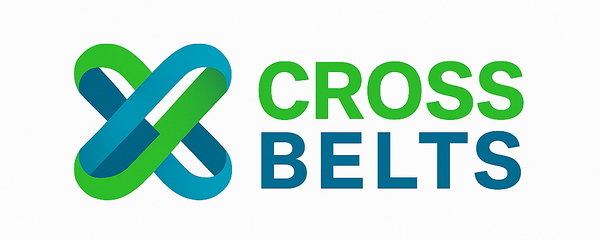Manufacturers
-

A Section 2 Banded Belt Interchange Chart
A Section 2 Banded Belt Banded A-Series Belts are engineered for high-load...
-
A Section V-Belts
A Section V-Belts The most popular conventional V-belt size—perfect for lawn &...
A Section V-Belts
A Section V-Belts The most popular conventional V-belt size—perfect for lawn &...
-

Allis Chalmers
Allis Chalmers Replacement Belts This collection features high quality aftermarket belts built...
-

Arctic Traveler
Arctic Traveler Replacement Belts This collection includes rugged aftermarket belts designed to...
-

Atlas Copco
Atlas Copco Replacement Belts This collection features high performance aftermarket belts designed...
-
B Section V-Belts
B Section V-Belts Wider profile for heavier agricultural and industrial drives. More...
B Section V-Belts
B Section V-Belts Wider profile for heavier agricultural and industrial drives. More...
-

Banded Belts
Banded Belts – Heavy Duty Power & Reliability Banded belts are engineered...
-

Banded Cogged Belts
Banded Cogged Belts – Flexible Strength for Demanding Drives Banded cogged belts...
-

Banded Kevlar Belts
Kevlar Banded Belts – Maximum Strength Under Extreme Load Kevlar banded belts...
-

Banded Wedge Belts
Banded Wedge Belts – Compact Design, Maximum Grip Banded wedge belts use...
-

Belt Cross Reference
Aftermarket Brand Cross References At CrossBelts.com, we know the frustration of equipment...
-

Billy Goat
Billy Goat Replacement Belts This collection features high-quality aftermarket belts designed to...
-

Briggs & Stratton
Briggs & Stratton Replacement Belts This collection features high-quality aftermarket belts engineered...
-
C Section V-Belts
C Section V-Belts Heavy-duty conventional belts for high-torque, high-load drives where durability...
C Section V-Belts
C Section V-Belts Heavy-duty conventional belts for high-torque, high-load drives where durability...
-

Carrier Transicold
Carrier Transicold Replacement Belts This collection features high-performance aftermarket belts engineered to...
-

Caterpillar
Caterpillar Replacement Belts This collection features premium aftermarket belts designed to replace...
Not finding the Cross Reference you want?

V‑Belt Finder Search Tool
Enter a belt number (e.g., A88, BX70, 5L600, 3VX560) and hit Search.
As an Amazon Associate, a commission is earned from qualifying purchases.



























